Vannes de contrôle pneumatiques - Utilisation de signaux pneumatiques pour contrôler le débit pour une automatisation sûre et non électrique. Découvrez notre gamme de vannes de contrôle pilotées par air. Ils utilisent un signal d'air à basse pression pour déplacer le tiroir de la vanne principale, contrôlant ainsi la trajectoire du flux sans aucune alimentation électrique. Cela en fait un choix intrinsèquement sûr et fiable pour les environnements dangereux tels que les usines chimiques ou les mines, ou pour les applications à forte humidité. Trouvez dès maintenant le bon distributeur pour votre système de contrôle non électrique.
Besoin de produits pour votre projet ?
Nous comprenons que la recherche de sources d'approvisionnement peut être un défi.
Remplissez le formulaire avec vos articles spécifiques - n'hésitez pas à indiquer des composants uniques ou difficiles à trouver - soumettez votre demande et obtenez les solutions sur mesure que vous recherchez ! Oubliez les offres génériques ; nous sommes spécialisés dans la compréhension de vos besoins exacts et dans l'obtention de résultats qui vous vont comme un gant.
Nos vannes de contrôle d'air sont conçues pour diriger et gérer le flux d'air dans vos systèmes pneumatiques avec une fiabilité exceptionnelle. Idéales pour les applications nécessitant un actionnement robuste et non électrique, ces vannes garantissent un fonctionnement souple et un contrôle précis pour un large éventail de tâches d'automatisation industrielle.
Actionnés par des signaux pneumatiques (pilotés), ils offrent des performances fiables, en particulier dans les environnements où l'actionnement électrique n'est pas souhaitable ou possible.
Construites pour durer, nos vannes de contrôle d'air résistent aux conditions industrielles exigeantes, garantissant un fonctionnement constant et une maintenance minimale.
Disponible dans différentes configurations (par exemple, 3/2, 5/2, 5/3) pour gérer avec précision la direction du flux d'air pour les actionneurs à simple ou double effet.
Les vannes de régulation pneumatique, en particulier les types pilotés, utilisent une petite quantité de pression d'air (le signal pilote) pour déplacer un tiroir ou un clapet interne plus grand. Cette action redirige le flux d'air principal à travers différents orifices, contrôlant ainsi le fonctionnement de vérins pneumatiques, d'actionneurs ou d'autres dispositifs. Cette méthode permet un contrôle robuste sans entrée électrique directe au niveau de la vanne elle-même.
Conçus avec des voies d'écoulement internes optimisées pour fournir un débit d'air maximal (Cv/Kv) avec une perte de charge minimale, garantissant un fonctionnement efficace de l'actionneur.
Des bobines usinées avec précision et des joints de haute qualité résistants à l'usure garantissent une longue durée de vie et des performances constantes.
Conçus pour fonctionner de manière fiable dans une large gamme de températures ambiantes et de milieux, ils conviennent à divers environnements industriels.
De nombreuses séries proposent des embases pour manifold permettant l'assemblage compact de plusieurs vannes, ce qui simplifie la tuyauterie et l'installation.
Par exemple, 3/2, 5/2, 5/3 (centre fermé, centre d'échappement, centre de pression).
Taille du filetage des orifices d'entrée, de sortie et d'échappement (par exemple, G1/8, G1/4, G1/2).
Pilote à air simple, pilote à air double.
Plage pour l'alimentation en air principal et le signal d'air pilote.
Indique la capacité de la valve à laisser passer l'air.
Temps nécessaire à la vanne pour se déplacer après l'application du signal pilote.
Généralement en alliage d'aluminium pour une bonne solidité et une bonne résistance à la corrosion.
Corps à pores ou montage sur collecteur.
Pour les paramètres détaillés, veuillez vous référer aux manuels des produits individuels ou à l'adresse suivante consulter nos experts techniques.
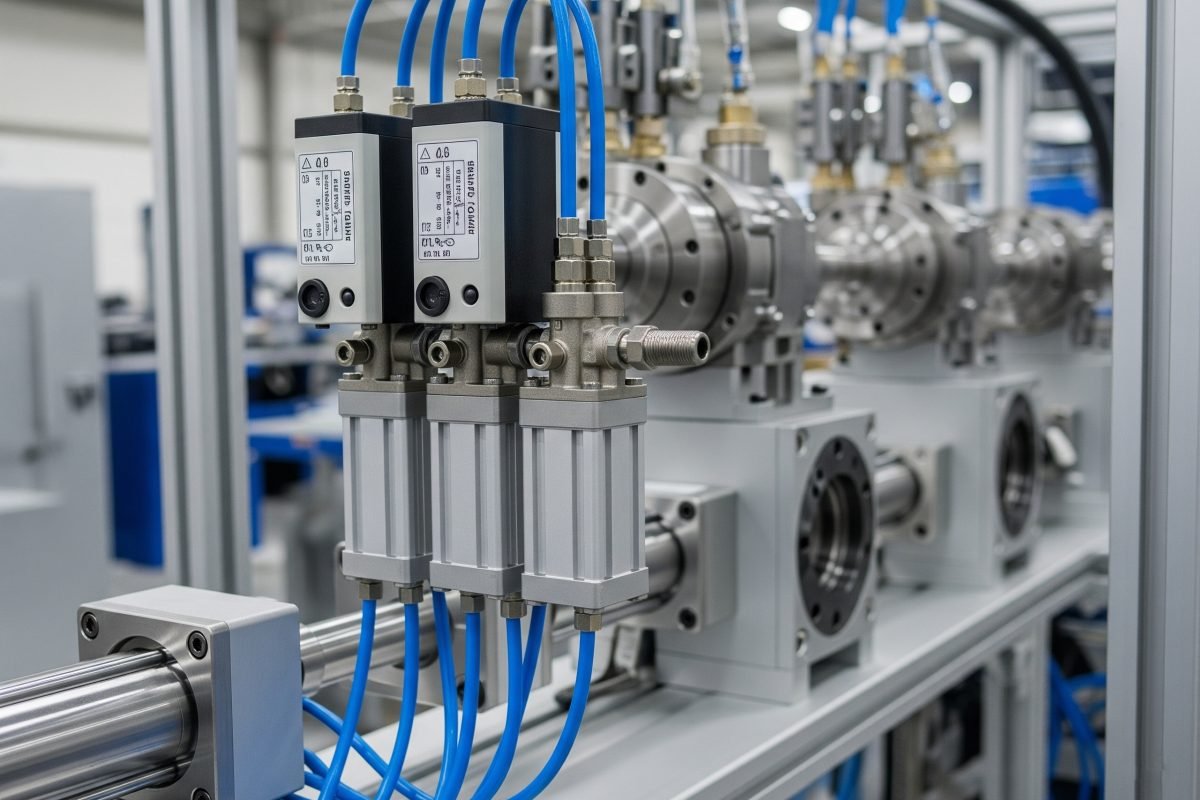
Diriger le flux d'air pour contrôler le mouvement (extension/rétraction, rotation) des cylindres pneumatiques et des actionneurs rotatifs.
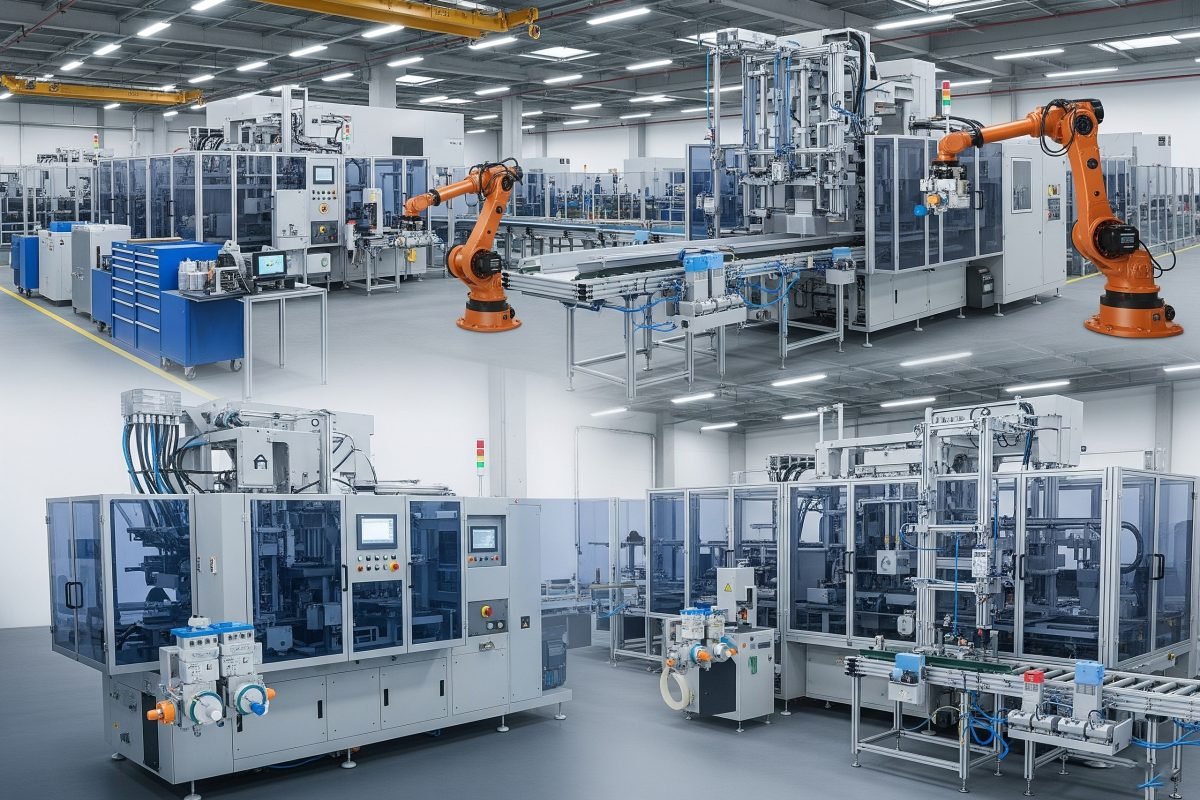
Composants intégraux des machines d'emballage, des lignes d'assemblage, des systèmes de manutention et des applications robotiques.
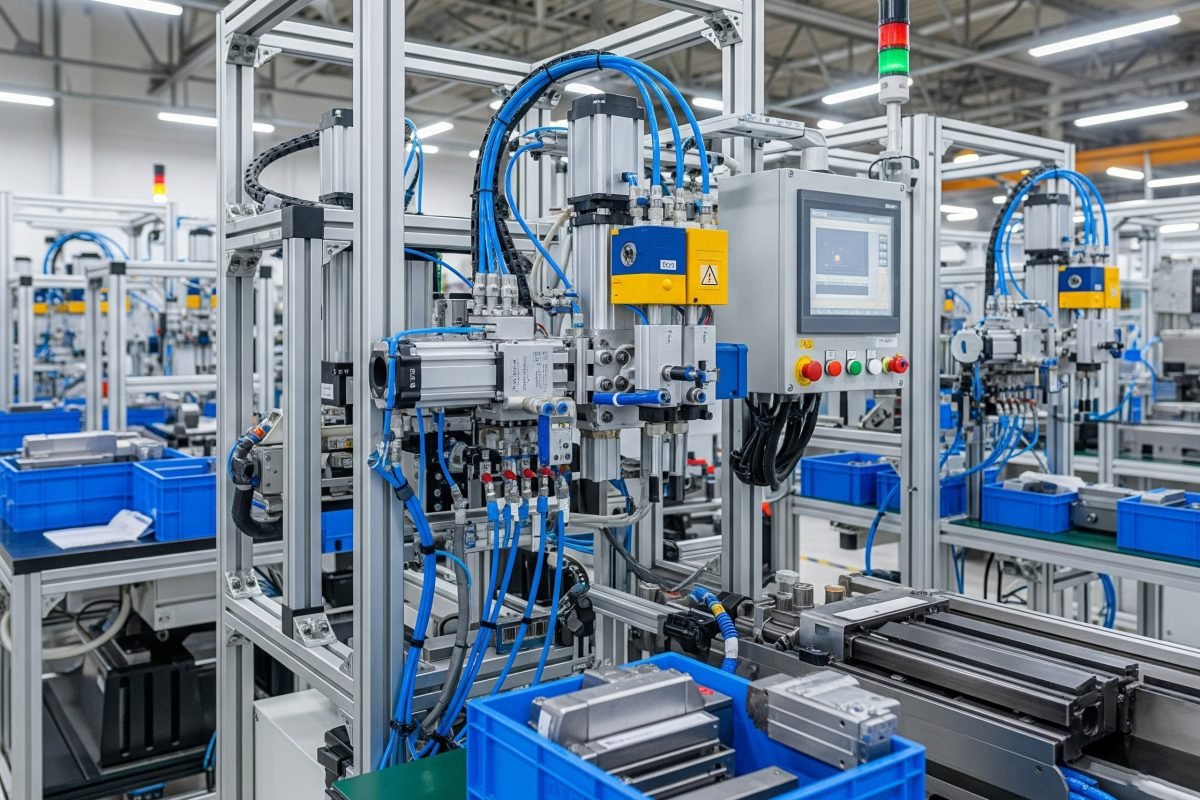
Utilisé dans divers processus de fabrication pour le tri, le détournement, le serrage et d'autres tâches automatisées.
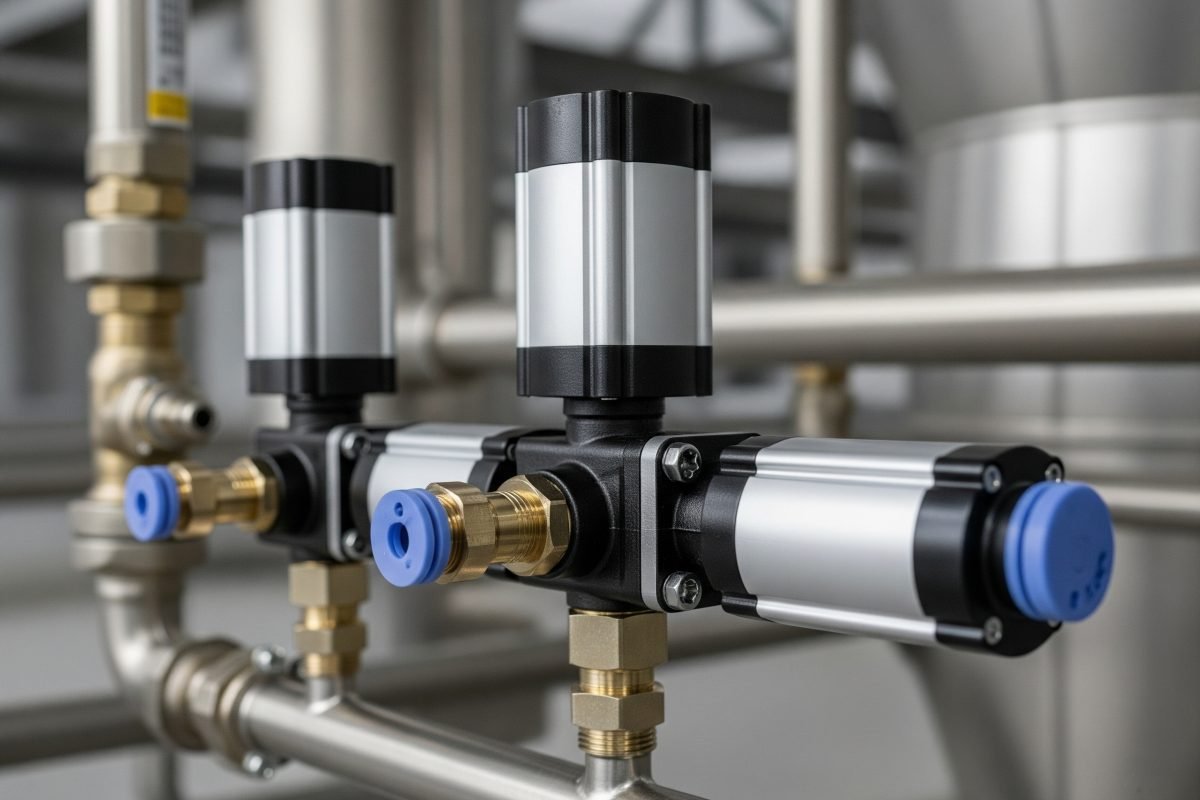
Idéal pour une utilisation dans les zones explosives ou poussiéreuses où les composants électriques présentent un risque.
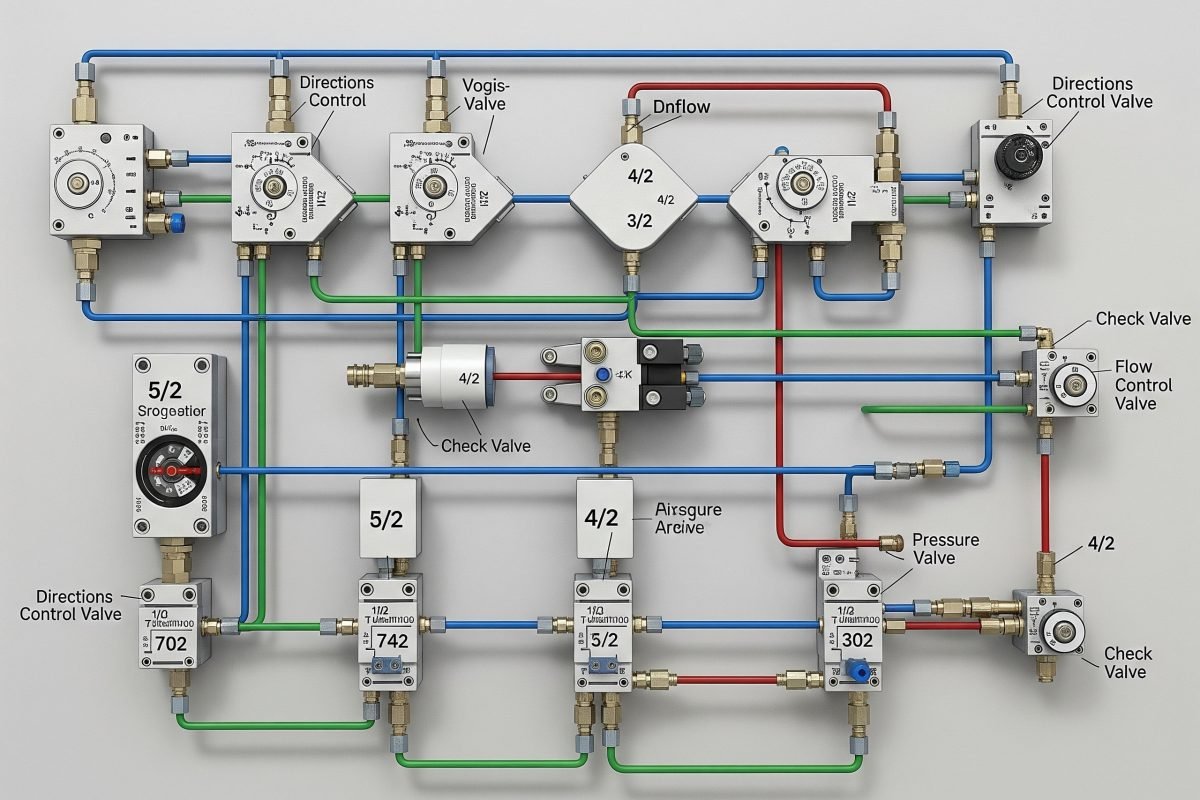
Peut être utilisé pour construire des circuits de commande purement pneumatiques pour des fonctions spécifiques de séquençage ou de logique.
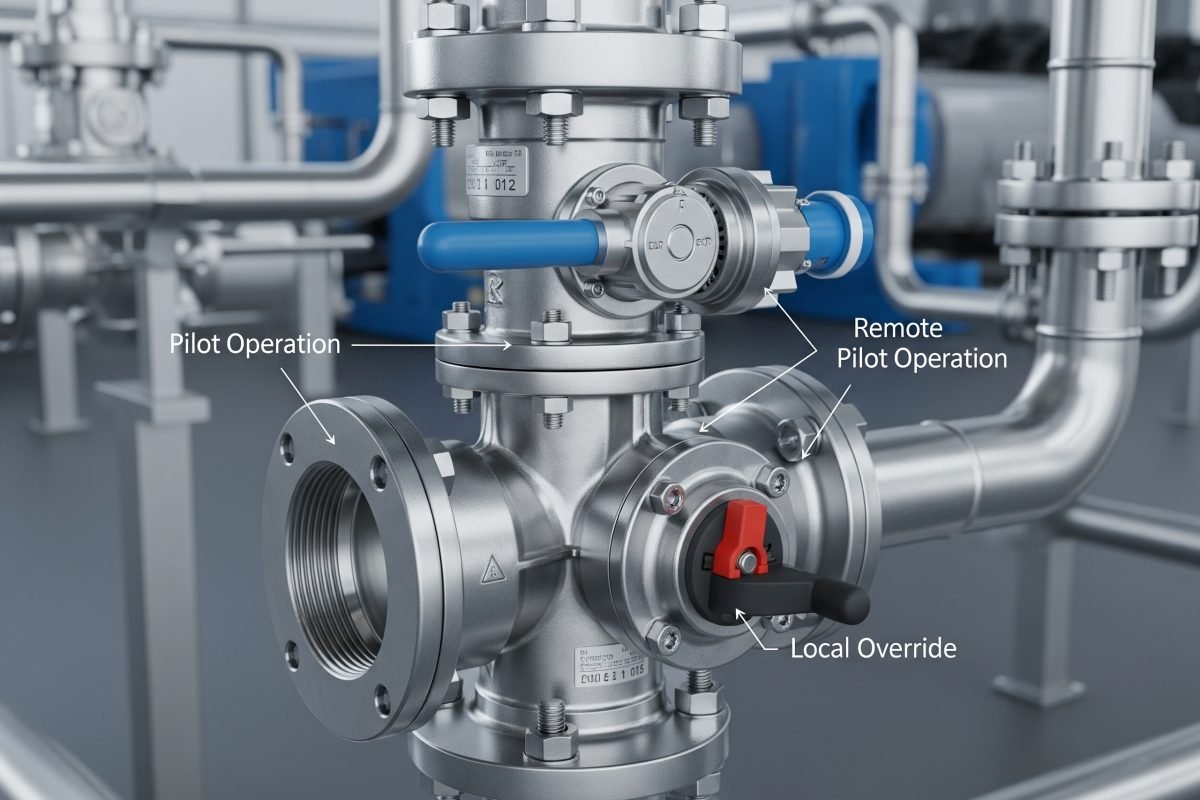
La commande pilote permet d'agir à distance, tandis que les commandes manuelles offrent un contrôle local pratique.
Il faut toujours dépressuriser et mettre hors tension le système avant toute installation, entretien ou dépannage.
La principale différence est le méthode d'actionnement:
Bien qu'ils contrôlent tous deux le flux d'air, leurs moyens d'activation et les environnements d'application typiques peuvent différer de manière significative.
Cette notation décrit la fonction de la vanne :
Par exemple :
La pression de pilotage minimale est de les pression atmosphérique la plus basse nécessaire au niveau de l'orifice du pilote pour déplacer de manière fiable le tiroir du distributeur principal. Cette valeur est spécifique à chaque modèle de valve et est généralement indiquée dans sa fiche technique.
Il est essentiel de s'assurer que la pression du signal du pilote respecte ou dépasse cette exigence minimale. Si la pression de pilotage est trop faible, la vanne risque de ne pas se déplacer complètement, de se déplacer lentement ou de ne pas se déplacer du tout, ce qui entraînera un dysfonctionnement du système. La pression de pilotage minimale peut également varier en fonction de la pression de la ligne principale dans certaines conceptions de vannes.
Oui, de nombreuses vannes de contrôle de l'air sont conçues pour montage du collecteur. Un collecteur est un bloc de base avec des passages d'alimentation et d'échappement communs, permettant à plusieurs vannes d'être montées côte à côte de manière compacte.
Les avantages du montage sur collecteur sont les suivants
Pour maximiser la durée de vie des vannes de régulation d'air :
Pour un contrôle directionnel robuste et fiable, nos vannes de contrôle pneumatique offrent les performances dont vous avez besoin. Explorez notre gamme pour trouver la solution idéale pour votre application, ou contactez nos spécialistes en pneumatique pour obtenir des conseils et des solutions d'experts.
